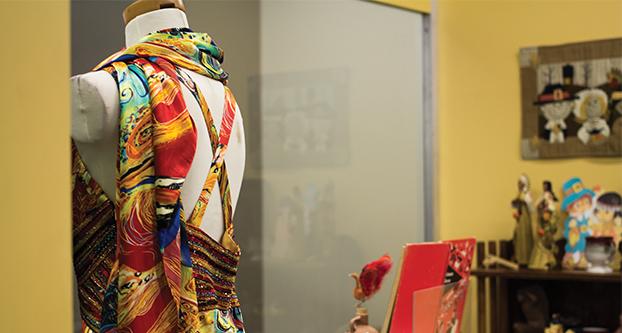A white man on the dance floor is presumed to be a bad dancer; a Mexican womanpushing a blond child in a stroller is presumed to be the nanny and a Jewish man paying arestaurant bill might not tip well because it is assumed that he is cheap.
These are common racial stereotypes that most have either thought or possibly said out loud. Are they harmless? Are the words hurtful? Are these stereotypes something that are reinforced by popular culture and the world around us?
The interactive exhibit “Sorting Out Race: Examining Racial Identity and Stereotypes inThrift Store Donations” is using these questions as a means to inspire a conversation about race and stereotypes. Coming to Fresno State from North Newton, Kansas, the exhibit was a concept that began five years ago at the Kauffman Museum at Bethel College.
“Sorting Out Race” opened Sept. 9 and will run until Oct. 28. Students are encouraged to come be a part of the solution in trying to figure out where to go from here. The exhibit is located in the Pete P. Peters Balcony gallery on the third floor of the north wing in the Henry Madden Library.
In a TED Talk video, the museum’s director, Annette Lezotte, discuss the history and ideabehind the interactive exhibit. The whole concept came about when a local thrift store managerpresented donated items to the museum which had either blatant or subtle racist undertones. The store manager felt they were offensive and therefore wanted to know what to do with these items.
This inspired Lezotte and her team to ask the question, “Are we perpetuating negativestereotypes and negative attitudes about race that lead to contemporary social injustices andsystemic racism?”
This thought process was reinforced by Chuck Regier, the curator of exhibits at Kauffman Museum.
“Do we want these thrift shop items to make a statement? No. We want these artifacts to prompt people to ask questions.” The artifacts Regier is referring to are donated items given to thrift stores that highlight racial stereotypes.
An example used in the TED Talk was a postcard with an illustration of an African American man running from a police officer wielding a gun and baton. This image was created in 1915 and may reflect the beliefs of that time period. However, is it offensive today considering the social unrest that is occurring at this very moment?
Jennifer Crow, curator of the Arne Nixon Center at the Henry Madden Library, who is spearheading the visit of this exhibit says she hopes the items prompt visitors to ask questions, maybe even start to trigger them to recognize how many discriminatory undertones exist all around us.
“We are hoping that this exhibit starts a healthy and respectful conversation aboutracism,” Crow said.
When Crow was asked if she was nervous, she replied, “In a way, yes.”
Not because she thinks people would dislike the exhibit or threaten anyone over it, but Crow does recognize that some of the shop items could ignite an emotional reaction.
As a way to acknowledge these reactions, Crow set up a panel discussion onopening night to help introduce the topic, and invited a guest speaker, Dr. David Pilgrim of the Jim Crow Museum.
Dr. Shane Moreman was joined at Fresno State by community panel members, Desmond Davila of Hinds Hospice, Kathy OsterbergSobelman owner of Osterberg’s Mercantile Antiques, and a fellow Fresno State professor, Dr. Melanie Hernandez.
“We cannot afford to be colorblind. We have to be color-brave,” says a display inside.




